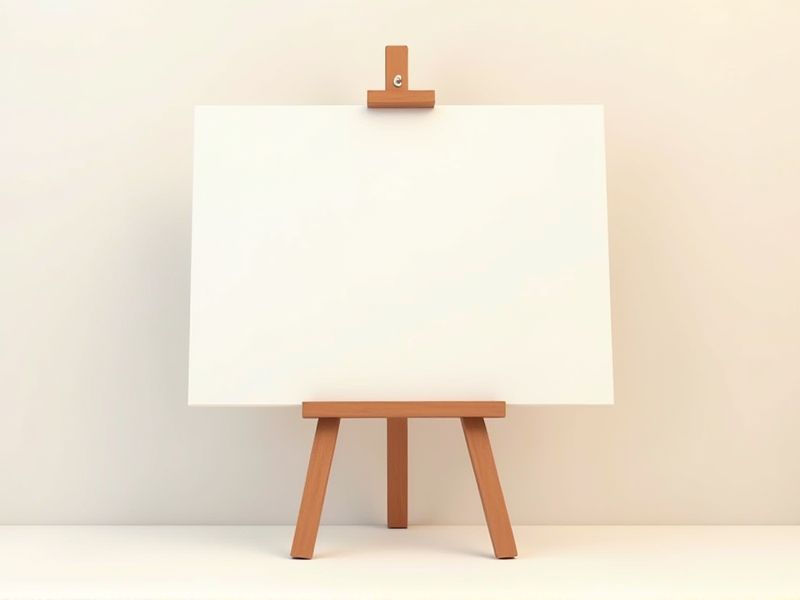
Selecting the right canvas size is essential for your painting project, as it determines both the visual impact and practicality of your artwork. The most common standard canvas dimensions are 8"x10", 11"x14", 16"x20", 18"x24", and 24"x36", each catering to different types of compositions and environments. For example, smaller canvases like 8"x10" are ideal for quick studies or gifts, while larger sizes such as 24"x36" suit statement pieces intended for prominent wall display. Choosing a standard size also makes it easier to find ready-made frames and display solutions, helping you present and protect your art efficiently.
Aspect Ratio
The standard aspect ratio for painting canvases typically ranges between 1:1 and 3:2, with 16:9 becoming popular for landscape and modern aesthetic preferences. For portrait-oriented works, a common size is 18x24 inches, adhering to a 3:4 ratio, while landscapes often favor sizes like 20x30 inches, corresponding to a 2:3 ratio. Understanding these ratios can help you select the appropriate canvas size that complements your artistic vision and ensures a balanced composition. Properly selecting the aspect ratio can enhance the viewer's experience, drawing attention to key elements of your artwork.
Canvas Thickness
Canvas thickness significantly impacts the durability and performance of your painting surface. Typically, a canvas thickness between 10 and 12 ounces is considered ideal for medium to heavy painting techniques, allowing for both rigidity and flexibility. For larger artworks or those employing heavy impasto techniques, a thicker canvas, around 14 to 16 ounces, ensures stability and prevents warping. Choosing the appropriate thickness enhances your overall painting experience, ensuring that your artworks maintain their integrity over time.
Edge Finish
Edge finish is a critical aspect of painting canvas, impacting both the aesthetic quality and durability of the artwork. High-quality canvases often feature a professionally wrapped edge, measuring at least 1.5 inches thick, which enhances the visual appeal and prevents distortion over time. Primed edges, which may also be painted or left natural, can elevate the overall presentation and provide additional protection against wear. Investing in a well-finished edge not only preserves your artwork but also adds value to your creative expression, making it a worthwhile consideration for artists and collectors alike.
Material Type
When selecting a painting canvas, the material type significantly influences the artwork's durability and texture; cotton and linen are the primary options. Cotton canvases are popular for their affordability and accessibility, typically ranging from 10 to 12 ounces per square yard, making them suitable for beginners and casual artists. Linen canvases, while more expensive, offer superior longevity and a finer texture, often weighing between 12 to 16 ounces per square yard, ideal for professional applications. Your choice of canvas material directly impacts your painting technique, drying time, and overall finish, guiding your creative process.
Standard Sizes
Standard sizes for painting canvases typically range from 8x10 inches to 48x60 inches, accommodating various artistic needs. The most commonly used sizes include 16x20 inches, 18x24 inches, and 24x36 inches, which provide ample space for detailed work and expansive compositions. Artists often choose these dimensions based on their intended display areas or the scale of their projects, ensuring that the artwork fits harmoniously within its environment. For your next creation, consider how these standard dimensions can influence your artistic expression and presentation.
Custom Sizes
When selecting a painting canvas, custom sizes offer a versatile solution tailored to your artistic needs. Custom dimensions can range from 8x10 inches to expansive murals exceeding 10 feet, allowing for unlimited creativity. The quality of the canvas material also significantly impacts the artwork's longevity, with options such as cotton, linen, or synthetic blends providing varying textures and weights. Investing in a custom-sized canvas not only enhances your artistic expression but ensures that the final piece fits perfectly within your intended display space.
Frame Compatibility
When selecting a painting canvas, ensure that it measures 18 inches by 24 inches for optimal frame compatibility, as this size often suits many standard frames. The canvas should be at least 1.5 inches thick to maintain structural integrity and resist warping over time. Look for pre-stretched canvases that use high-quality cotton or linen fabric for superior texture, allowing for better paint adherence and vibrant color reproduction. Before purchasing, confirm the frame dimensions to avoid mismatches, ensuring your artwork fits seamlessly within your chosen display.
Display Format
The standard sizes for painting canvases commonly include 8x10 inches, 16x20 inches, and 24x36 inches, catering to various display formats. A larger canvas, such as 48x60 inches, can serve as a captivating focal point in a spacious setting, while smaller options are perfect for intimate spaces. Choosing a high-quality, stretched canvas ensures durability and a professional finish, enhancing the overall aesthetic of your artwork. Selecting the right display format will not only accentuate your painting's details but also complement the surrounding decor effectively.
Weight Considerations
When selecting a painting canvas, weight is a crucial factor as it directly affects portability and ease of use. A standard canvas typically weighs between 5 to 10 ounces per square yard, with heavier options providing increased durability. For larger projects, consider heavier canvases that can withstand the pressure of multiple paint layers, as they often avoid warping or sagging. Understanding the weight specifications will help you choose the ideal canvas suited for your artistic needs and enhances your painting experience.
Priming Options
Priming is essential for enhancing the quality and longevity of your painting canvas, influencing how paint adheres and appears. Common priming options include traditional gesso, which provides a flexible, absorbent surface, and acrylic gesso, offering a fast-drying alternative ideal for acrylic paints. For oil painting, using oil-based primers creates a non-absorbent surface that supports the rich textures and techniques characteristic of the medium. Applying a single to three coats of primer is recommended, ensuring it dries completely between applications for optimal results.
